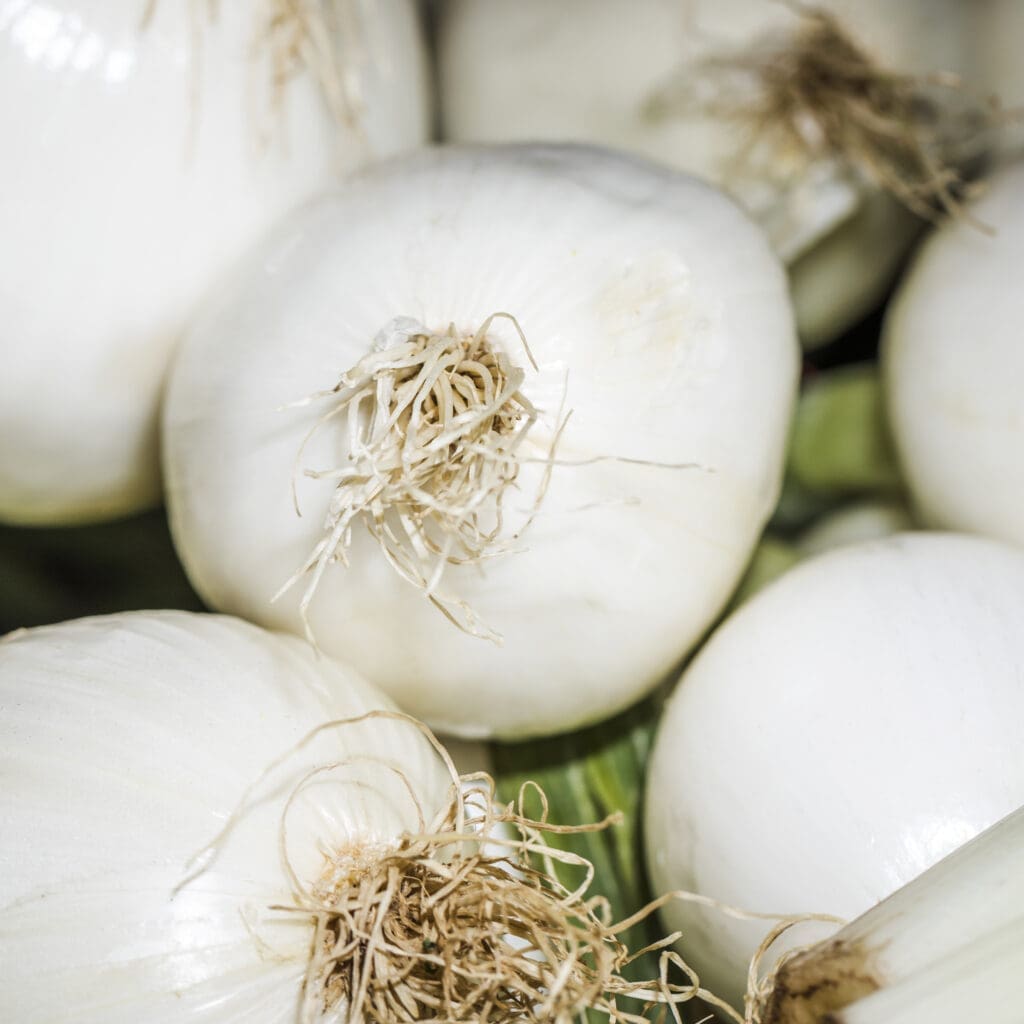
Allium cepa
Latin name: Allium cepa
Short name: All-c
Common name: Common Onion | Garden Onion | Bulb Onion | Spanish Onion | Kitchen Onion
Primary miasm: Psoric Secondary miasm(s): Sycotic
Kingdom: Plants
Family: Amaryllidaceae
- Symptomatology
- Remedy Information
- Differentiation & Application
Allium cepa is one of the oldest cultivated vegetables, belonging to the family Amaryllidaceae. Its fleshy bulb is rich in sulphur-containing compounds (including allyl-propyl disulphide), which are released when cut, producing the characteristic pungent odour and lachrymation. Widely cultivated across the globe, it has culinary, medicinal, and preservative uses. In homeopathy, the fresh bulb is chopped and macerated in alcohol to prepare the mother tincture. The proving reveals a marked affinity for mucous membranes of the eyes, nose, and respiratory tract, producing a profuse, acrid, watery discharge and sneezing — closely resembling the common cold or hay fever.
Used as a flavouring in cuisines worldwide; traditional medicine employs onions for their antimicrobial, anti-inflammatory, and circulatory benefits. Onion syrup has been a folk remedy for coughs and colds. Extracts are also used to stimulate appetite, lower blood sugar, and improve circulation.
Proved by Dr. C. Hering in 1847 and confirmed by clinical use in coryza and hay fever [Hering]. Symptoms primarily affect the mucous membranes of the nose, eyes, and larynx, with characteristic alternation between sides.
- Mucous membranes – Nasal passages, eyes, larynx, trachea [Hering, Clarke].
- Respiratory system – Coughs, colds, influenza, laryngitis.
- Sensory organs – Eyes and nose in acute catarrh.
- Peripheral nerves – Neuralgias, especially after injuries [Allen].
- Circulation – Tendency to local congestion in acute inflammations.
- Open air (except for some coughs)
- Cool air for headache
- Rest and lying quietly
- Evening for some catarrhal symptoms
- Warm rooms (increases nasal discharge) [Clarke]
- Being indoors
- Evening and night for cough
- Left side or after changing from warm to cold air
- Spring and autumn; damp cold winds
- Euphrasia officinalis – Bland nasal discharge, acrid lachrymation (opposite to Allium cepa).
- Arsenicum album – Thin, acrid nasal discharge, but more prostration, anxiety, and burning pains.
- Sabadilla – Coryza with violent sneezing, but more itching and spasmodic character.
- Gelsemium sempervirens – Influenza with catarrh, but more muscular weakness and drowsiness.
- Complementary: Phosphorus, Nux vomica, Arsenicum album.
- Follows well: Aconitum in the early inflammatory stage of coryza.
- Antidotes: Arnica for neuralgic pains after injury; Camphora in medicinal overdose.
Allium cepa’s essence lies in acrid nasal discharge with bland lachrymation, left-sided onset of coryza, and aggravation in warm rooms with relief in open air. Acts rapidly in acute colds, hay fever, and influenza, especially when discharge is profuse, excoriating, and accompanied by sneezing and laryngeal irritation.
Particularly effective in hay fever where the discharge is acrid and watery, starting on the left and extending to the right [Hering]. In neuralgias after injuries or amputations, it can relieve pain when other remedies fail. Low potencies (2x–6x) in acute colds; higher potencies for neuralgias.
Mind
- Irritability with catarrh
- Mental dulness from coryza
Head
- Headache from coryza
- Pain in forehead, extending to root of nose
Eyes
- Lachrymation, profuse, bland
- Conjunctivitis with coryza
Nose
- Discharge, watery, acrid
- Sneezing, frequent, in warm room
- Coryza, beginning on left, moving to right
Throat
- Rawness, larynx, with cough
Respiration
- Cough from tickling in larynx
- Cough, worse evening, warm room
Skin
- Excoriation of upper lip from nasal discharge
Generalities
- Neuralgia after injuries
- Symptoms worse in warm rooms, better in open air
- Hering, C., Guiding Symptoms of Our Materia Medica – Original proving notes; keynote of acrid nasal discharge with bland lachrymation; modalities.
- Clarke, J. H., A Dictionary of Practical Materia Medica – Seasonal coryza patterns; alternating sides; modalities from warm rooms and open air.
- Allen, T. F., Encyclopaedia of Pure Materia Medica – Details of neuralgic pains post-injury; proving symptoms of mucous membranes.
- Boericke, W., Pocket Manual of Homeopathic Materia Medica – Condensed keynotes and clinical applications in coryza and influenza.
